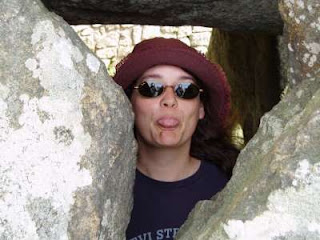I was in Remuda group 1 this morning with Kathy. Group 1 is usually at the fire pit, but we managed to encourage Kathy into the warmth of the lodge and therefore had a comfortable overview of yesterday's work and then some conga horse simulations of the suspension rein during gait and the quack-cha-ching techniques.
Next into the classroom with Tina covering today's topic of Latitudinal Flexion or bend. Once the shaping and balance suspension rein sequence of downward transitions, during gait and upward transitions are well underway in yours and your horse's education, then you can start Snakey Bends - the latitudinal flexion technique.
Snakey Bends is where your horse is 'straight' on a circle, where his body is bent to the same degree as the circle, i.e. inside hooves inside the circle and outside hooves, outside the circle. It is important to note that this is bending or flexing the inside of the horse, not pushing zone 1 from the outside (driving). And the aim of the game is equality. Equal flexion to left and right and the ability to swing between the two. The suspension rein talks to the inside of the horse's bend.
Snakey Bends will develop rhythm, relaxation, bend and fluidity with the goals being to shape the horse, set up lateral maneuvers and to raise the withers (off the forehand). Once Snakey Bends are established you can move onto Serpentines both deep and shallow. Online maneuvers would be falling leaf or zone 3 (ribs), while freestyle could be the bulls eye pattern (level 2 impulsion).
The next thing to cover was that if we went the horse to bend then so do we. How is this achieved? The Drag Queen walk sets this up! Basically move your opposite shoulder/arm over towards your leading hip whilst walking slowly. Very amusing! Other simulation to help the human achieve the necessary muscle memory included being the horse and human on a circle and conga horse simulations.
Today's demonstration was taken by Tina with student volunteer's Karme and US Stephanie. It helped to see these demonstrations to visualise what the Drag Queen walk looked like whilst riding! Both riders did a great job and I think we got to see some positive changes in both the horses and the humans. The most important piece of information I think came out of this demo was that Snakey Bends is a principle and therefore you should start by asking for only one step, then two and slowly building to full circles.
Lastly we all made our way back to the seat builders for a 'putting lots of things together' simulation. So whilst staying on your balance point and maintaining fluidity you had to follow the feel of two independent hands! Sound easy? Try it - this is difficult even whilst the rest of the body is stationary!
